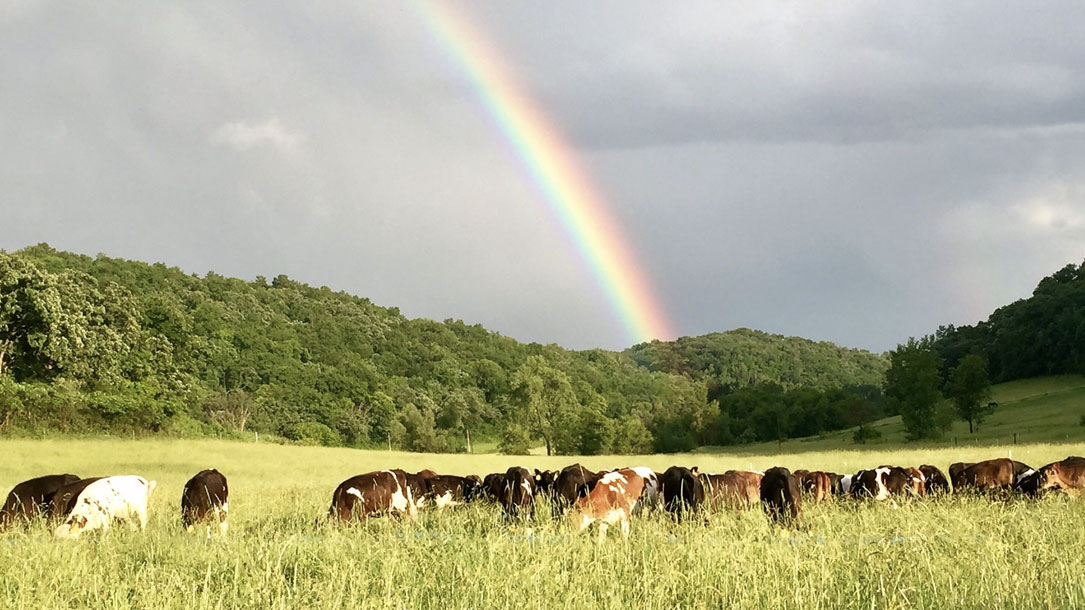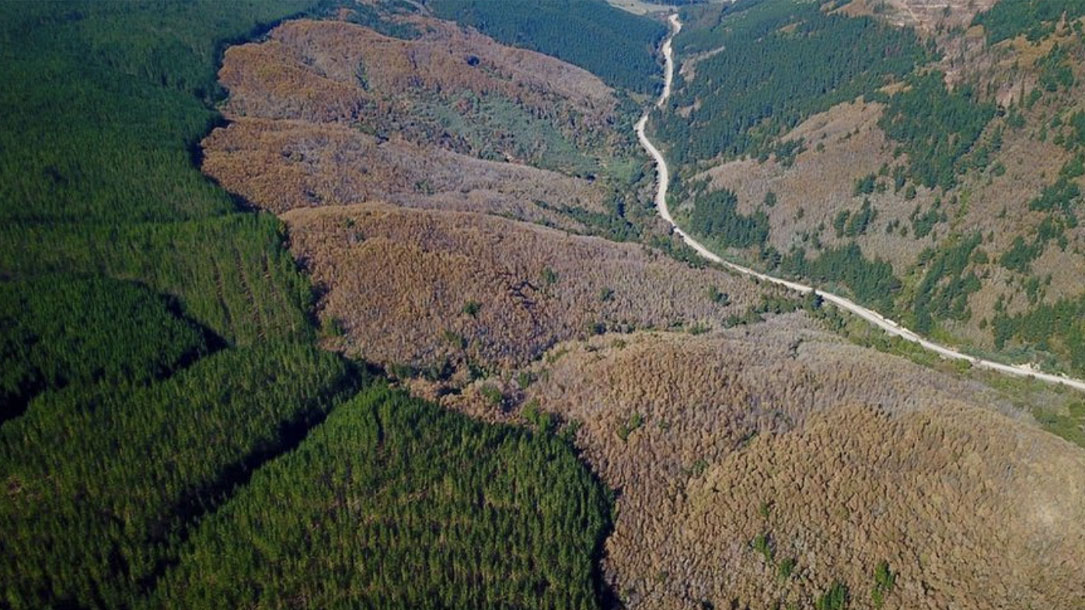Home > Climate News >

Smart Solar Siting partnership project for New England
American Farmland Trust’s Smart Solar Siting Partnership Project for New England started as a two-year effort to build an influential, ongoing, multi-stakeholder coalition supporting recommendations that advance smart solar siting policies and programs in New England states. This is a joint effort to accelerate the expansion of renewable solar energy facilities while maintaining New England’s most productive, resilient farmland and forest land and strengthening its regional food systems.
Check out their program and resources. Your land trust and community may be able to model a similar approach.

Strategies for Mitigating Climate Change with Natural and Working Lands – A Policy Analysis and Playbook
“Wisconsin’s more than 33 million acres of forests, farms, and conservation lands cover more than 92% of our state. They play a critical role in absorbing and offsetting carbon dioxide (CO2) and other greenhouse gas emissions that are the primary cause of climate change.
Together, these “Natural and Working Lands” are a highly productive resource, contributing farm and forest products to our economy, providing recreation opportunities and a high quality of life, and quietly but effectively offsetting CO2 emissions.”

New report: “Strategies for Mitigating Climate Change with Natural and Working Lands”
Wisconsin’s more than 33 million acres of forests, farms, and conservation lands cover over 92% of the state. They play a critical role in absorbing and offsetting carbon dioxide (CO2) and other greenhouse gas emissions that are the primary cause of climate change. Together, these “Natural and Working Lands” are a highly productive resource, contributing farm and forest products to [the] economy, providing recreation opportunities and a high quality of life, and quietly but effectively offsetting CO2 emissions.
Natural and Working Lands make a significant contribution to cleaner air and reduced warming, with large benefits for soil, water, and people. By managing [the] Natural and Working Lands effectively, Wisconsin could offset an additional 16 million tons of CO2 each year—equal to 20% of our annual net greenhouse gas (GG) emissions.
See the full report “Strategies for Mitigating Climate Change with Natural and Working Lands” here.

It’s time for businesses to aim higher. Here’s one way to do it—natural climate solutions
Corporations are (rightly) first focused on reducing their emissions. That’s absolutely where they need to start, and it should be their highest climate-related priority. Thanks to pressure by activists, customers, shareholders and employees, companies are now taking action. They’re not waiting for government regulations mandating them to do so. They’re doing what they can to reduce their carbon emissions by using less energy and switching to renewables.
And when they can’t reduce further, they are now also committing to purchase large volumes of offsets to reach carbon neutrality. Some companies go even further and aim to reach net negative.
This is where NCS enters the picture…

As storms and sea level rise reshape beaches, volunteers keep track of changing coasts
The Hampton Beach profilers and their fellow Coastal Research Volunteers are a community group facilitated by New Hampshire Sea Grant. The National Sea Grant College Program (Sea Grant) is a NOAA-funded network of 34 programs in each of the U.S. coastal and Great Lakes states. Sea Grant supports research, education, and outreach to help balance the conservation of coastal and marine resources with a sustainable economy and environment.
In addition to New Hampshire, Sea Grant also engages community volunteers in monitoring beaches in California and Maine. All rely on dedicated “citizen scientists” to collect critical data on the erosion and health of their state’s sandy beaches. Beach profiling volunteers measure changes in beach slope with a pair of two-meter poles, a short connecting rope, and the horizon line…

Climate change: Planting new forests “can do more harm than good”
Rather than benefiting the environment, large-scale tree planting may do the opposite, two new studies have found.
One paper says that financial incentives to plant trees can backfire and reduce biodiversity with little impact on carbon emissions. A separate project found that the amount of carbon that new forests can absorb may be overestimated.
The key message from both papers is that planting trees is not a simple climate solution…

Grant for climate resilience outreach, education
Eastern Shore Land Conservancy: This project, entitled “Rise and Thrive: Building Understanding and Support for Climate Action on Maryland’s Eastern Shore,” is the second grant awarded to ESLC’s coastal resilience program by the Rauch Foundation in as many years.
The purpose of this project is to directly engage public and private audiences in order to build regional public support for climate adaptation solutions. The Eastern Shore of Maryland is the country’s third most vulnerable region to sea level rise, behind south Florida and Louisiana. Because of the threats of increased flooding, the loss of properties, and widespread ecological impacts, ESLC is working with communities to take action on these threats today…

Answers in the trees
Columbia Land Trust (in Washington State) has been weaving climate change into its publications and outreach. Here’s an example:
“There are two ways to restore some semblance of balance to the carbon cycle: reduce emissions from fossil fuel use and increase the carbon-absorbing power of forests and other plant-rich landscapes.
Both methods are needed. We call the latter approach a ‘natural climate solution.’
Forests, especially the verdant, fast-growing forests of western Oregon and Washington, already provide a number of benefits even before taking carbon storage into account, including wood products, forestry jobs, world-class recreation, wildlife habitat, and clean air and water. ‘People manage forests for multiple purposes,’ says Lydia Mendoza, conservation lead with Columbia Land Trust. ‘Carbon sequestration is one of many crucial values that forests can provide.’ Leveraging the carbon-sequestering power of forests involves balancing values and evolving as we learn…’

Sustainability and climate change initiatives
In their most recent climate initiative, the Kennebec Land Trust Finance Committee worked with Kennebec Savings Bank Investment and Trust Services to move their investments into a Socially Responsible Investment (SRI) portfolio that is aligned with their mission. SRI considers environmental, social, and corporate governance criteria to generate long-term competitive financial returns and positive societal impact.
As managers of forestland, they use and promote forest management practices that maximize carbon sequestration, including: protecting soil carbon, where about 50% of the carbon inventory is typically stored on a forested acre; promoting native species and increasing plant diversity to improve forest resiliency and carbon storage; harvesting sustainably; and taking a long-term view by growing high-value and larger diameter trees. On the ground, their forestry days at the Curtis Homestead are teaching the next generations…

Forest carbon: An essential natural solution for climate change
Climate change can seem like an overwhelming challenge, and it can be difficult to find meaningful ways to make a difference…
Many landowners have begun to ask how their forest management strategy affects the carbon within their forest and thus the forest’s ability to mitigate climate change. Every strategy has its tradeoffs; therefore, to meet all of society’s needs, we will ultimately need a mix of passive and active strategies across the region. What role will your forest play?
To learn more, download the “Forest Carbon: An essential natural solution to climate change” PDF (5 MB) or request a free copy by e-mailing Paul Catanzaro…












